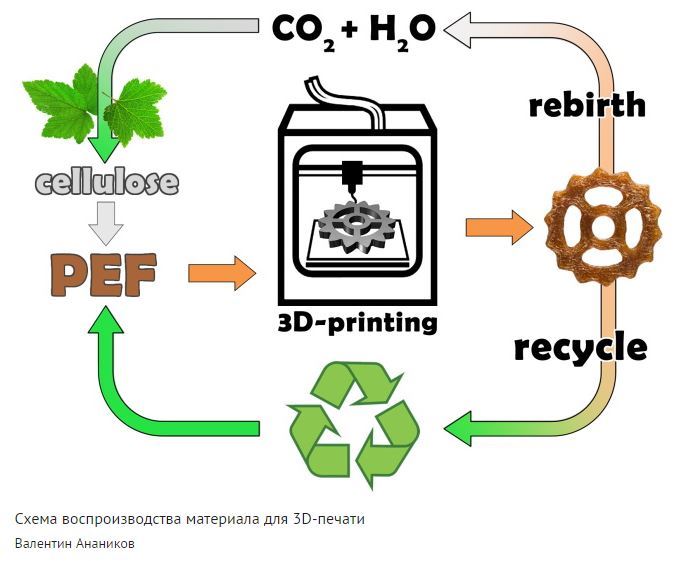3D printing technology that uses cheap natural materials based on pulp
Russian chemists have developed a 3D printing technology that uses cheap natural materials based on pulp. Based on the new technology, finished products can be printed virtually from water and air without polluting the environment. The work was carried out with the support of the Russian Science Foundation (RPF). The results were published in the journal Angewandte Chemie.
3D (3D) printing allows you to create ready-made products of any degree of complexity from computer digital models in a short time. Researchers from the N.D. Institute of Organic Chemistry The russian academy synthesized a unique PEF material, allowing for 3D printing cheaply and environmentally friendly. Its full name is poly (ethylene-2.5-furandicarboxylate). The peculiarity of this material is that it is derived from a natural substance – cellulose, which belongs to the category of the most promising renewable resources. In nature, cellulose is synthesized from carbon dioxide and water, available in the atmosphere in almost unlimited quantities. The source of energy for this reaction is sunlight.
The "recipe" of the new substance is simple: in the first stage, plant biomass (cellulose or fructose) is transformed into 5-(hydroxymethyl)furfurol (5-HMF). Chemists know many methods of this transformation. Then 5-HMF oxidizes into 2.5-furandicarbic acid, which after a reaction with methanol is transferred to the corresponding complex ether. All three stages of this reaction are of no practical complexity and have already been scaled up to industrial production. Despite its simplicity, the 3D printing of PEF material was made for the first time.

The resulting polymer showed high chemical stability, it does not oxidize, is resistant to chemical solvents and does not decompose, being in the natural environment. Moreover, it can be used many times. Products from such polymer will be quite durable, and additive technologies, such as 3D printing, allow you to create an object of almost any complexity.
"It is important that the resulting material can be repeatedly regenerated and reused. At the end of the life cycle, the 3D-printed product can be converted into carbon dioxide and water by burning, and then again obtained cellulose through the plant's photosynthetic system. Closed carbon-neutral cycle does not pollute the environment, it is based on cheap natural resources and can be carried out an unlimited number of times," concluded one of the authors of the paper Valentin Anani
kov.Source indicator.ru